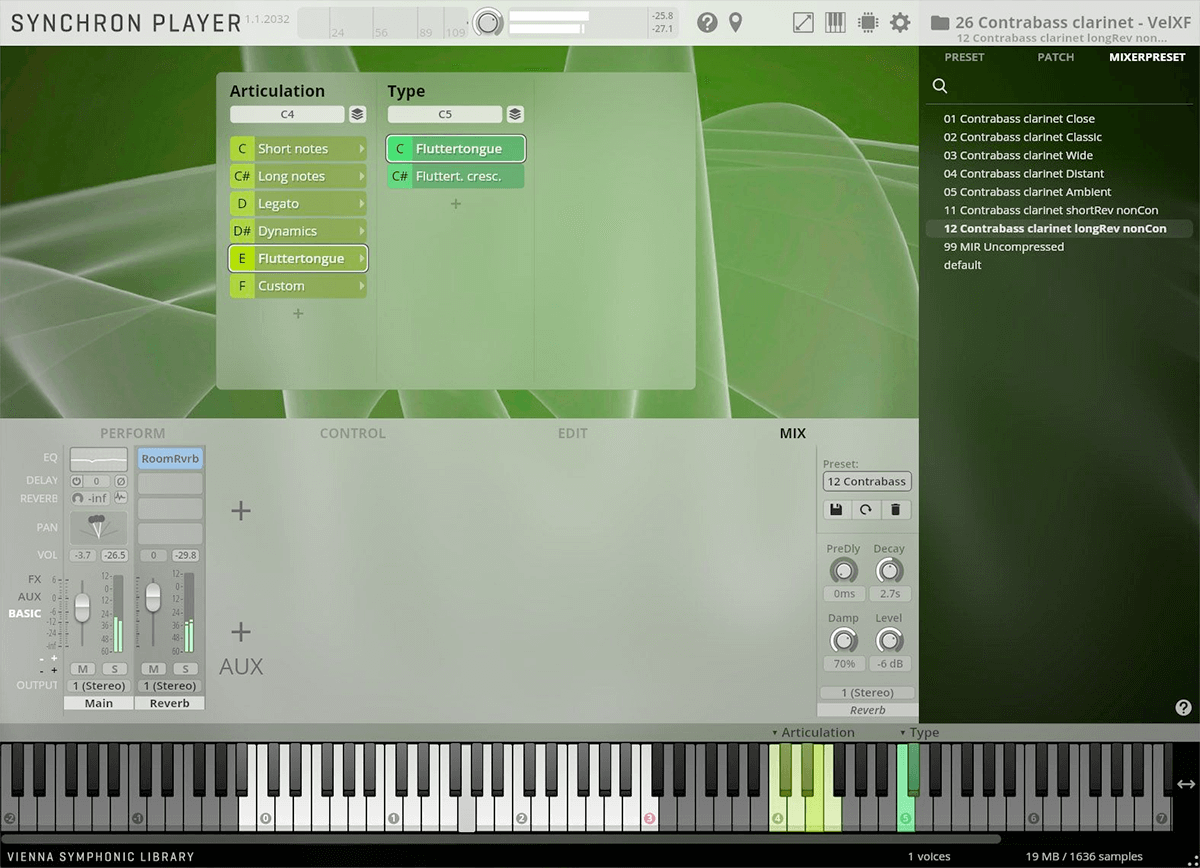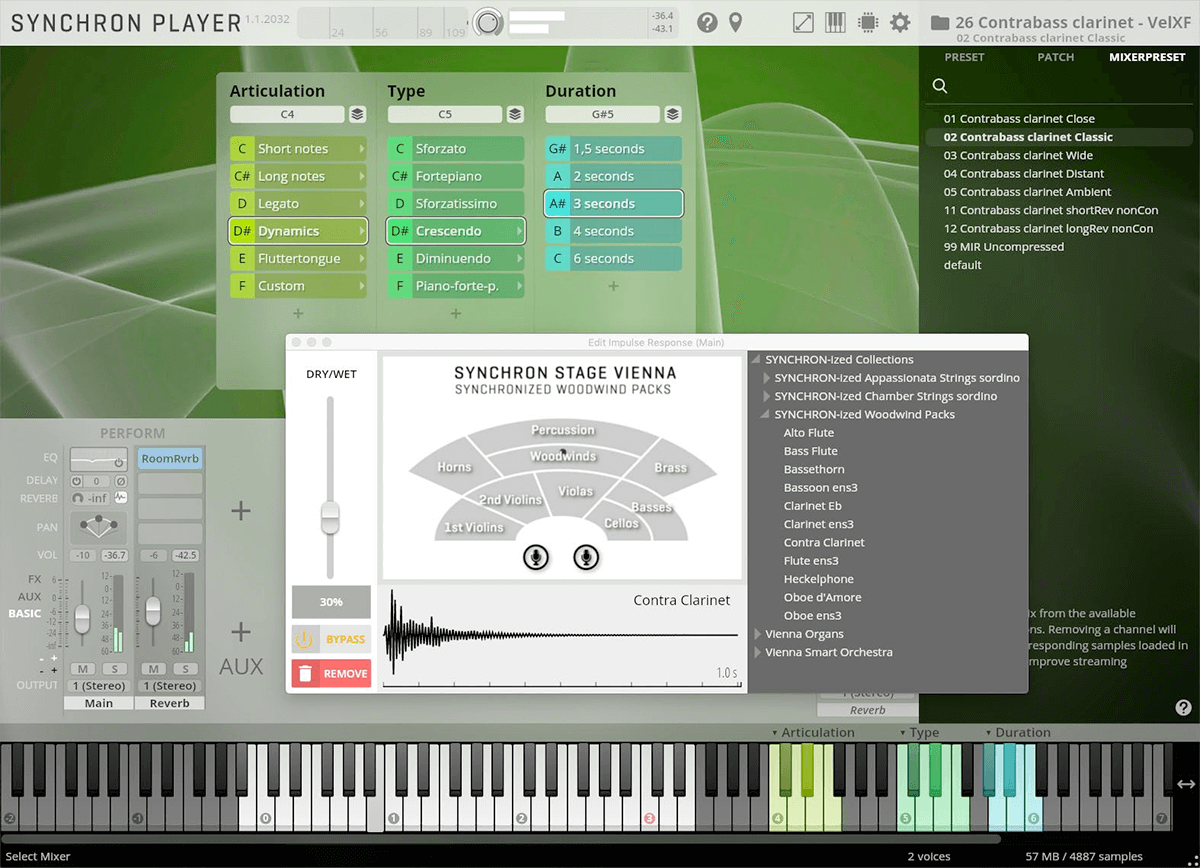Deep Sounds
The contrabass clarinet, almost twice the length of a bass clarinet, is the deepest and largest in the clarinet family. It produces a powerful and sonorous sound.
Recorded in our Silent Stage's dry and controlled environment, it offers all common articulations.
Key Features
- Recorded at Silent Stage
- Short and long notes, legato, dynamics, flutter tongue, repetitions
- Authentic mixer presets for Synchron Stage Vienna
- Turn off internal reverb for any virtual acoustic setting
Instrument Basics
The contrabass clarinet is a transposing instrument notated in treble key, sounding a major ninth lower. Some have extra keys to extend the range.
It's more common in brass and military music than in orchestras. Its tone is rich and full, with rough low - end notes.
Versatile Performance
It's increasingly seen in contemporary orchestra pieces but is very popular among jazz musicians for its strengths and versatility. Players like Anthony Braxton and Hamiet Bluiett are well - known users.
Sampling Excellence
The library offers a full set of articulations, including short and long notes, legato (even for trills), crescendos, diminuendos, sfz, sffz, pfp, flutter tongue, and repetitions.
Dry recording at the Silent Stage allows you to place samples on your virtual stage and integrate them with the Synchron Series using the internal reverb of Synchron Stage Vienna.


Using the contrabass clarinet from this library is easy. First, load the library into your music software. You can choose from a wide range of articulations like short and long notes, legato, and flutter tongue to add variety to your music. For a more authentic sound, use the mixer presets designed for the Synchron Stage Vienna. If you want to place the instrument in your own virtual acoustic environment, simply switch off the internal reverb. When it comes to maintenance, since this is a sampled library, make sure your computer system meets the requirements for smooth operation. Keep your software updated to ensure compatibility and access to any new features. And don't forget to explore all the different articulations to make the most of this unique instrument in your compositions.
